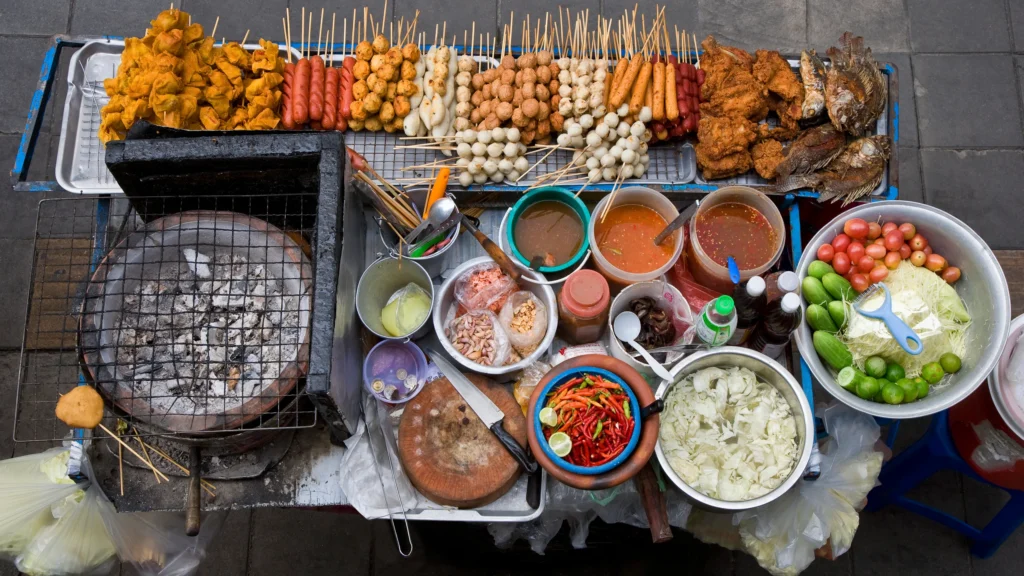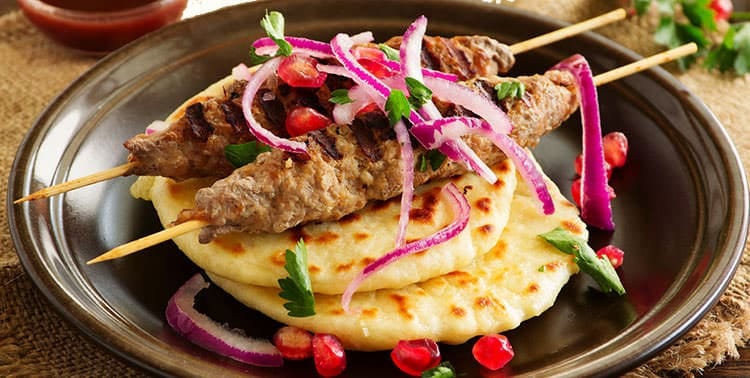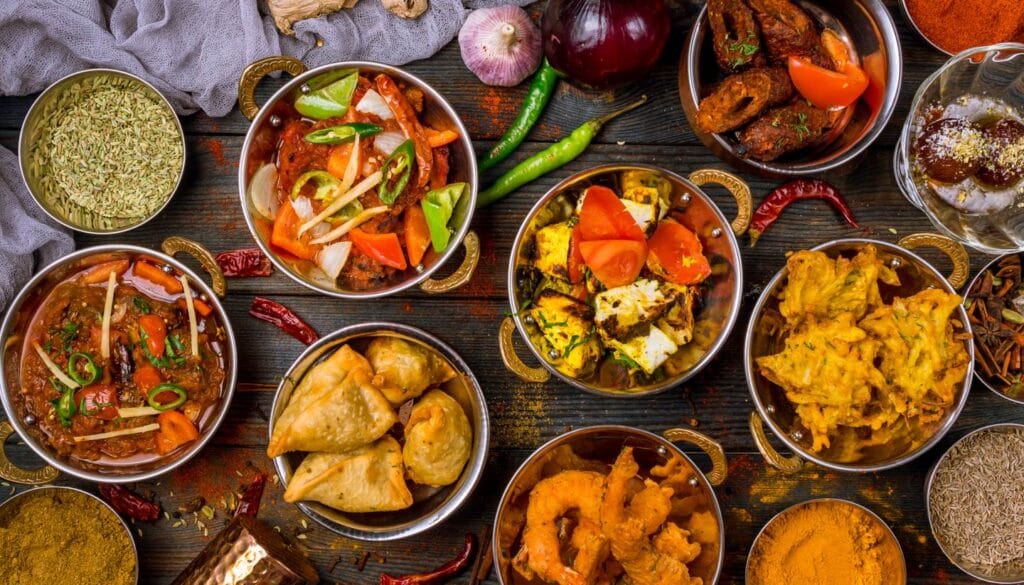Introduction: The World of Culinary Travel
Culinary travel has emerged as a significant trend within the travel industry, captivating individuals seeking authentic experiences that immerse them in local cultures. Rather than simply tasting new dishes, culinary travel allows travelers to engage deeply with a destination by exploring its gastronomic traditions, customs, and history. This approach emphasizes the notion that food is not just sustenance, but a reflection of the culture and identity of a place.
In an increasingly interconnected world, the desire for culinary experiences is driven by a growing appreciation for diverse cuisines and an understanding of their cultural contexts. Travelers are now prioritizing meals that tell a story, often viewing food as a gateway to foster connections with local communities. Engaging with local food producers, participating in cooking classes, or dining at family-owned establishments provides invaluable insights into the social fabric of a destination. Culinary travel thus not only satisfies the palate but also enriches the overall travel experience.
The significance of culinary travel can be seen in its ability to cultivate a sense of belonging and understanding between individuals from different backgrounds. As travelers explore the unique flavors of various regions, they often find common ground in shared dining experiences, bridging cultural gaps and creating lasting memories. Furthermore, this type of travel promotes sustainability and supports local economies by encouraging tourists to seek out authentic food experiences rather than opting for mainstream dining options.
As we embark on a journey to uncover ten unique destinations renowned for their immersive culinary experiences, it becomes evident that the world of culinary travel holds the potential to transform ordinary trips into extraordinary adventures, enriching our understanding of the places we visit.
Bangkok, Thailand: Street Food Extravaganza

Bangkok, the bustling capital of Thailand, is renowned for its vibrant street food culture, offering visitors an opportunity to indulge in a diverse array of flavors and dishes. The city’s streets come alive with food stalls and carts that serve up culinary delights, making it a haven for food enthusiasts. Markets such as Chatuchak and Yaowarat stand out as iconic destinations, attracting locals and tourists alike who seek to experience the rich tapestry of Thai cuisine.
The variety of dishes available is astonishing, ranging from the world-famous Pad Thai, characterized by stir-fried rice noodles combined with shrimp or chicken, bean sprouts, and peanuts, to the spicy and fragrant Tom Yum Goong, a shrimp soup that is a staple of Thai dining. Mango Sticky Rice, a sweet dessert made with glutinous rice, coconut milk, and ripe mango, is another must-try delicacy that highlights the balance between flavors that Thai cuisine is known for. Each dish not only satisfies the palate but also tells a story about the culture and heritage of this Southeast Asian nation.
Participating in food tours is highly recommended for those who wish to fully immerse themselves in Bangkok’s culinary landscape. These tours allow participants to explore hidden gems and local favorites, guided by knowledgeable locals who share insights into the preparation and history of each dish. Furthermore, there is a growing trend in Bangkok’s street food scene that embraces fusion and innovation, combining traditional recipes with modern techniques or international influences. This evolution reflects the city’s adaptability and the ever-changing preferences of its diverse populace.
In conclusion, Bangkok’s street food extravaganza offers a unique culinary adventure that showcases Thailand’s rich flavors and traditions. Whether indulging in classic dishes or exploring new trends, the experience is sure to leave a lasting impression on any traveler’s palate.
Florence, Italy: A Taste of Tuscany

Florence, often heralded as the cradle of the Renaissance, is equally celebrated for its rich culinary heritage, particularly the traditional dishes of Tuscany. Central to this culinary landscape are iconic recipes such as Ribollita, a hearty vegetable soup that embodies the essence of Tuscan cuisine through its use of seasonal vegetables and day-old bread. Pici, a hand-rolled pasta, showcases the simplicity and quality of local ingredients, making it a must-try for visitors eager to savor authentic flavors. The experience of dining in Florence transcends mere eating; it is an opportunity to indulge in history, culture, and tradition.
Engaging in cooking classes in Florence provides an insightful exploration into the region’s culinary practices. These classes often emphasize the preparation of traditional dishes, offering hands-on experiences that range from making fresh pasta to mastering the art of Italian sauces. Such classes not only enhance one’s cooking repertoire but also forge a deeper connection to Tuscan cuisine and its roots in local farm-to-table practices.
Wine tastings in the nearby Chianti region further complement the culinary experience. Here, visitors can sample a variety of world-renowned wines, including Chianti Classico and Brunello di Montalcino, while learning about the meticulous wine-making process that has evolved over centuries. Incorporating visits to local vineyards enhances the overall gastronomic journey, allowing for a full appreciation of how regional climate and terroir influence flavor profiles.
Throughout the year, Florence plays host to numerous food festivals and events, celebrating the bounty of Tuscan gastronomy. Events such as the Florence Wine Event and the Gelato Festival provide visitors with unique opportunities to experience Tuscany’s vibrant food culture, drawing connections between traditional culinary practices and contemporary innovations. This culinary journey through Florence offers not just a taste of Tuscany but an immersion in its rich heritage.
Tokyo, Japan: From Sushi to Ramen

Tokyo stands as a culinary powerhouse, offering a remarkable array of dining experiences that encapsulate both traditional and modern Japanese cuisine. With the highest number of Michelin-starred restaurants in the world, the city is renowned for its exquisite sushi establishments, where skilled chefs meticulously prepare each piece of sushi using the freshest fish and premium rice. Dining at these top-tier venues provides not only a gastronomic delight but also a glimpse into Japan’s rich culinary history and the art of sushi making. Patrons can savor seasonal delicacies and witness firsthand the precision that defines this age-old practice.
In contrast to the opulence of high-end sushi restaurants, Tokyo’s ramen shops present a more casual yet equally compelling experience. The city’s ramen scene is diverse, with shops specializing in various broths, from miso to tonkotsu, and toppings ranging from chashu pork to soft-boiled eggs. Each bowl of ramen tells a story, shaped by the unique characteristics of its region and the personal touches of its creator. Visitors can embark on a ramen pilgrimage, sampling different styles and flavors across the city, ensuring that every meal is a new adventure.
Tokyo is also home to the bustling Tsukiji Outer Market, a must-visit for food enthusiasts. Although the inner wholesale market has relocated, the outer market remains vibrant, offering fresh seafood, produce, and ready-to-eat snacks. This lively environment allows visitors to taste local delicacies and engage with vendors, making it an invaluable sensory experience. Furthermore, the trend toward plant-based Japanese cuisine has gained traction in recent years, with innovative restaurants embracing local ingredients and traditional techniques to create vegan-friendly dishes. Such culinary creativity reflects the evolution and adaptability of Japanese cuisine, ensuring that Tokyo remains at the forefront of global culinary experiences.
Oaxaca, Mexico: A Festival of Flavors

Oaxaca, located in southern Mexico, is renowned for its rich culinary heritage, encapsulating a diverse array of flavors, ingredients, and traditions. One of the standout features of Oaxacan cuisine is its famous mole sauces. Often referred to as the backbone of the region’s gastronomy, these complex sauces are made with a plethora of ingredients including chilies, chocolate, spices, and nuts, providing a unique blend that is both savory and sweet. The art of creating mole is a skill passed down through generations, making it a true representation of local culture.
Furthermore, Oaxacan culture boasts a vibrant mezcal scene. This traditional spirit, distilled from the agave plant, is celebrated for its smoky flavor and rich history. Visitors can partake in mezcal tastings at local distilleries, where experts explain the production process and the subtle notes that distinguish each type. Engaging with the artisans who produce these spirits offers insight into the integral role mezcal plays within the Oaxacan lifestyle.
The bustling markets of Oaxaca serve as another culinary highlight, teeming with fresh produce, unique cheeses, and an impressive selection of local herbs and spices. Visitors can experience the rich sensory environment, where the aroma of freshly made tortillas mingles with the sounds of vendors. Seasonal festivals, such as Guelaguetza, further immerse travelers in the local food culture, showcasing traditional dishes, dances, and communal sharing that define the sense of community in Oaxaca.
In addition to celebrating traditional culinary arts, Oaxaca is witnessing a burgeoning movement towards sustainable and organic farming practices. These methods emphasize the preservation of local biodiversity and promote environmentally friendly farming. Many restaurants and cooking workshops now incorporate these philosophies, empowering visitors to engage hands-on with the region’s culinary landscape while emphasizing the importance of sustainability in modern gastronomy.
Barcelona, Spain: Culinary Creativity and Tradition

Barcelona stands as a vibrant testament to the successful marriage of traditional Catalan cuisine and innovative culinary techniques. This city is not only famed for its stunning architecture and rich history but also for its dynamic food scene that attracts gourmet enthusiasts from around the globe. The culinary offerings here are extensive and varied, with an emphasis on using fresh, locally sourced ingredients.
At the heart of Barcelona’s gastronomic culture are its renowned tapas bars, where small plates of delectable treats enable diners to explore a range of flavors in one sitting. These bars are often bustling hubs of creativity, showcasing traditional dishes like patatas bravas and escalivada while also presenting modern twists that challenge the culinary status quo. Innovative chefs are continuously experimenting, using molecular gastronomy and modernist techniques to reimagine classic recipes, thereby enhancing their appeal to contemporary palates.
The presence of Michelin-starred restaurants further elevates Barcelona’s culinary reputation. Establishments like El Celler de Can Roca and ABaC Restaurant & Hotel rank among the best in the world, offering meticulously crafted dishes that harmonize flavor and presentation. These culinary meccas not only elevate Catalan cuisine on the global stage but also serve as inspiration for local chefs, fostering a culture of excellence and creativity within the city.
Moreover, the influence of culinary schools has become increasingly significant, nurturing a new generation of chefs who emphasize sustainable seafood practices and promote local sourcing. This current movement aligns with broader trends in Spanish gastronomy, focusing on environmentally responsible approaches to cooking. As the gastronomic landscape of Barcelona continues to evolve, the city remains a benchmark for culinary creativity, blending tradition with modern innovation, while also contributing to the conversation surrounding sustainable food practices.
Istanbul, Turkey: A Melting Pot of Flavors

Istanbul, the cultural and historical heart of Turkey, is a vibrant intersection of Eastern and Western culinary traditions. Its rich culinary landscape reflects the city’s unique position, bridging continents and cultures, resulting in a remarkable diversity of flavors that are celebrated both locally and internationally. At the core of Istanbul’s gastronomy are traditional dishes that highlight this fusion, with kebabs and mezes taking center stage. Kebabs, with their various styles and preparations, showcase the mastery of grilling, while mezes offer a delightful assortment of small dishes designed for sharing.
The city’s dynamic markets, particularly the renowned Spice Bazaar, are essential for any culinary travel experience. This bustling market is filled with the scent of spices, teas, and traditional sweets, offering visitors a sensory feast. The blend of colors and aromas found here serves as a testament to Istanbul’s vibrant food culture, making it an essential stop for food lovers. The Spice Bazaar not only provides a glimpse into local ingredients but also acts as a hub for traditional culinary practices that have been upheld over generations.
In recent years, Istanbul has witnessed a revival of Ottoman cuisine, bringing forth ancient recipes that had faded from modern restaurants. These culinary initiatives aim to educate both locals and tourists about Turkey’s rich food heritage, with chefs increasingly showcasing traditional cooking techniques and ingredients. Furthermore, the street food culture in Istanbul is thriving, presenting an array of quick bites, from simit (sesame-encrusted bread) to döner (rotating roast meat), that exemplify the city’s spirit. As culinary trends evolve, Istanbul remains a vibrant canvas for both established and emerging culinary traditions, deeply rooted in history yet open to innovation.
New Orleans, USA: Where Food Meets Culture

New Orleans is a vibrant city renowned for its rich cultural tapestry and dynamic culinary scene. The unique blend of Creole and Cajun cuisines embodies the area’s diverse heritage, making it a pivotal destination for food lovers. One cannot discuss New Orleans without mentioning its iconic dishes, which have become staples in both local and international cuisine. Among these, Gumbo stands out as a hearty stew that reflects the city’s culinary roots, characterized by its flavorful combination of spices, meats, and seafood. Beignets, fluffy fried pastries dusted with powdered sugar, offer a delightful contrast and epitomize the sweet indulgences available throughout the city.
The culinary offerings are not just limited to traditional dishes; they are also strongly influenced by the city’s festive atmosphere. Events such as Mardi Gras celebrate the deep-seated food culture of New Orleans, showcasing an array of culinary delights that bring people together in a shared communal experience. This annual festival highlights how food is perceived as a source of joy and connection within the community.
In recent years, the gastronomic landscape of New Orleans has experienced a notable evolution. The farm-to-table movement has gained traction among local chefs and restaurants, emphasizing the sourcing of seasonal and locally-produced ingredients. This shift not only supports local farmers but also enhances the dining experience by ensuring that dishes are fresh and flavorful. Furthermore, the resurgence of classic cocktail culture has become increasingly evident as mixologists reintroduce time-honored techniques and recipes that pair beautifully with the city’s rich culinary offerings.
Ultimately, a visit to New Orleans is a profound exploration of food intertwined with culture, making it an essential culinary travel destination for anyone seeking to immerse themselves in a rich gastronomic experience.
8. Mumbai, India: Spice and Flavor Journey

Mumbai, India, stands as a vibrant metropolis known for its diverse and thriving street food culture, which serves as an essential aspect of the city’s culinary identity. Among the city’s most iconic dishes is Vada Pav, a delectable potato fritter served in a bun, often accompanied by spicy chutneys. This street food classic is not only a favorite among locals but also offers a unique glimpse into the spicy essence of Indian cuisine.
Pav Bhaji is another culinary delight that transforms a simple vegetable mix into a comforting dish, typically enjoyed with soft bread rolls. Renowned for its rich flavor profile, Pav Bhaji reflects Mumbai’s ability to blend tradition with contemporary tastes. Meanwhile, Pani Puri, a dish comprising hollow puris filled with spicy water, showcases the city’s penchant for bold flavors. Each bite provides a burst of tangy delight, making it a popular choice for both tourists and residents alike.
Food walks across the bustling streets of Mumbai are emerging as essential experiences, offering participants a chance to indulge in these local treats while exploring the city’s vibrant neighborhoods. Local markets, such as Crawford Market and Mohammed Ali Road, become essential stops for any culinary enthusiast. Here, shoppers can gather fresh ingredients and sample street foods, representing the rich tapestry of flavors that characterize Mumbai’s food scene.
Contemporary trends are also reshaping the culinary landscape of Mumbai. With the rise of fusion street food, chefs are experimenting by blending traditional Indian flavors with global cuisine, creating innovative dishes that appeal to younger generations. Health-conscious dining options are also gaining momentum, as eateries begin to offer lighter alternatives without compromising on taste. Mumbai’s evolving food scene promises a rich journey of discovery that emphasizes the importance of spice and flavor in every dish.
9. Cape Town, South Africa: Diverse Tastes of the Mother City
Cape Town, often referred to as the ‘Mother City’, boasts a vibrant culinary landscape that reflects its rich cultural heritage and diverse influences. This coastal city offers an array of local specialties that are an essential part of its identity. One such dish is Bobotie, a Cape Malay curry that combines seasoned minced meat with a unique custard topping. It captures the essence of Cape Town’s multicultural gastronomic traditions, making it a must-try for visitors. Another local favorite is Braai, South Africa’s traditional barbecue, where an assortment of meats and boerewors are grilled over an open flame, serving as both a meal and a social gathering. Enjoying Braai not only offers diverse tastes but also immerses visitors in the South African culture.
The culinary tourism scene in Cape Town has flourished in recent years, significantly influenced by food tours that pave the way for exploration beyond just local dining experiences. Tourists can indulge in guided excursions that showcase the city’s best eateries, including hidden gems and popular hotspots. These tours frequently include visits to the surrounding vineyards of Stellenbosch, renowned for producing some of the finest wines in the world. Wine tastings are an integral part of the experience, allowing travelers to appreciate the perfect pairings with local cuisine while enjoying the picturesque landscapes.
Furthermore, current food movements are reshaping Cape Town’s restaurant scene. With a focus on sustainability and locally sourced ingredients, many chefs are incorporating seasonal produce and traditional recipes into their menus. The emergence of farm-to-table concepts reflects a commitment to not only preserving culinary heritage but also promoting responsible consumption. This mutation within the city’s dining establishments highlights how culinary tourism in Cape Town is not merely about food; it represents a deeper connection to the region’s history, culture, and ongoing evolution.
![]()



